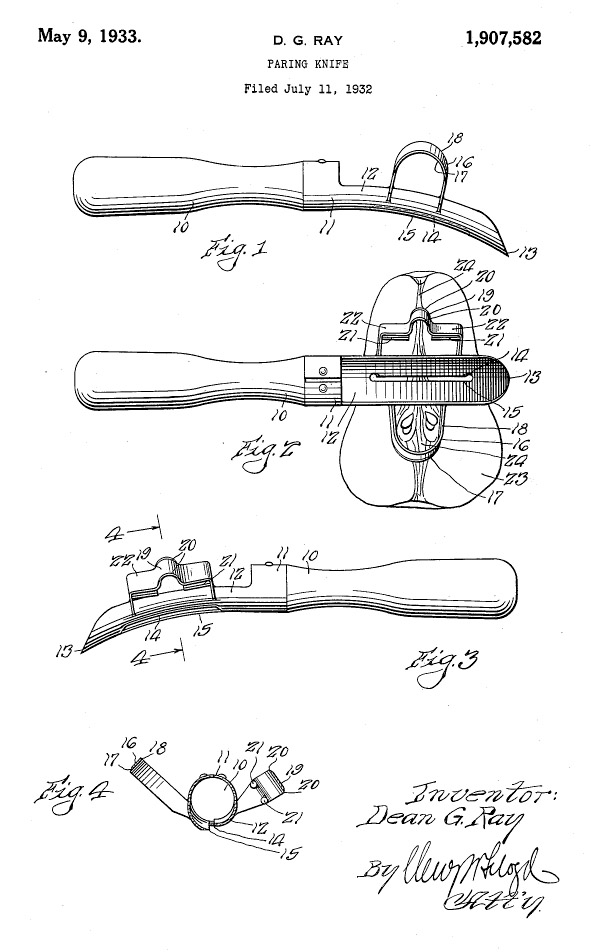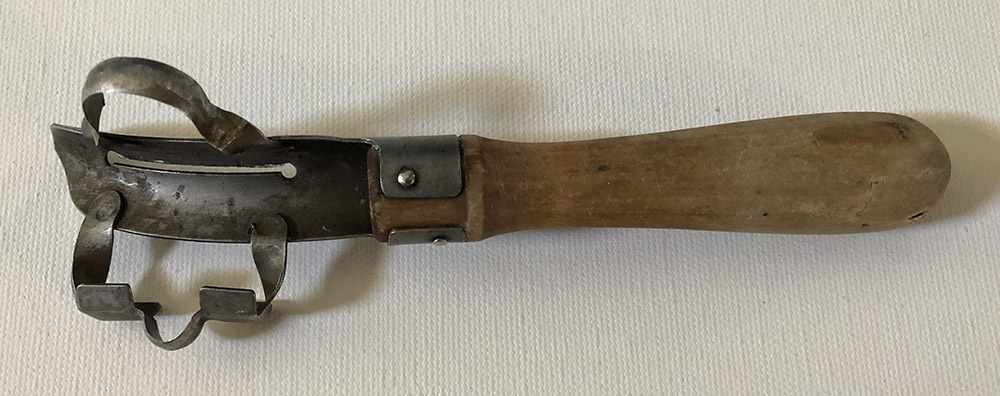
DEAN G. RAY patented a “paring knife” in 1933 that was specifically designed to prepare pears for canning in his own Oregon cannery.
Ray, of Woodburn, Oregon, was part owner and superintendent of Ray-Brown Cannery when he was granted Patent No. 1,907,582 on May 9, 1933 for “a hand tool suitable or use in the canning art.”
Ray said in his patent papers that although his invention “will be confined more or less to the pear packing industry,” it could be used in “the treatment of other fruit as, for example, apples and peaches.”
Obviously not limited to the pear canning industry, the device was mass produced by the Special Equipment Company of Portland, Oregon, and is today, nearly 90 years later, not an uncommon part of kitchen collections.
The knife is 6-1/2-inches in length and marked PAT. NO. 1,907,582. Ray said in his patent application that machines had taken over for individual employees to peel, split and core pears before canning. But, he added, because the pear could be “an irregularly shaped fruit,” there were imperfect results and an employee had to be stationed at the conveyor belt to “correct” the halved fruit as it passed by.
His invention, Ray said, was “useful for peeling, coring, removing sections…and doing all things necessary to overcome the defects which have been discovered in imperfect fruit after the fruit has left the mechanical devices for its treatment.”
Ray also said that in California at the time, but not so much in the Pacific Northwest, the treatment of pears for canning was done by one employee, using “a plurality of tools, each used independently of the other.”
His device was “suitable for performing” all the preparation “except the splitting of the pear, hence reducing the number of tools required to be at the command of the operative to two.”
__________
(c) 2020, Donald Thornton. All rights reserved.


